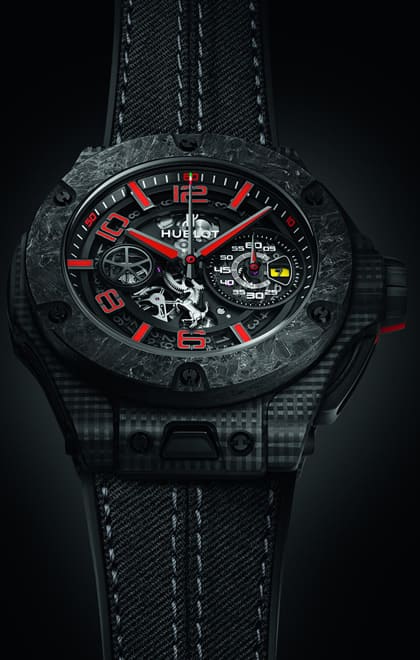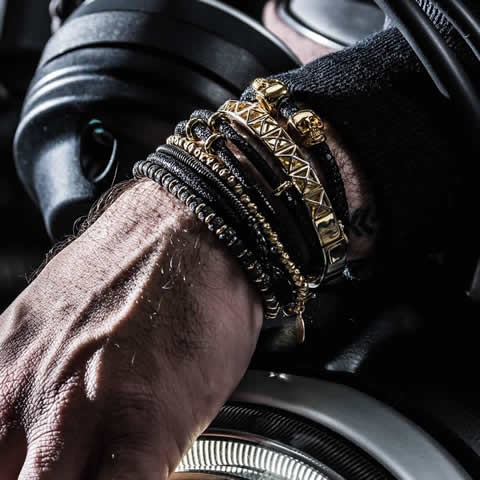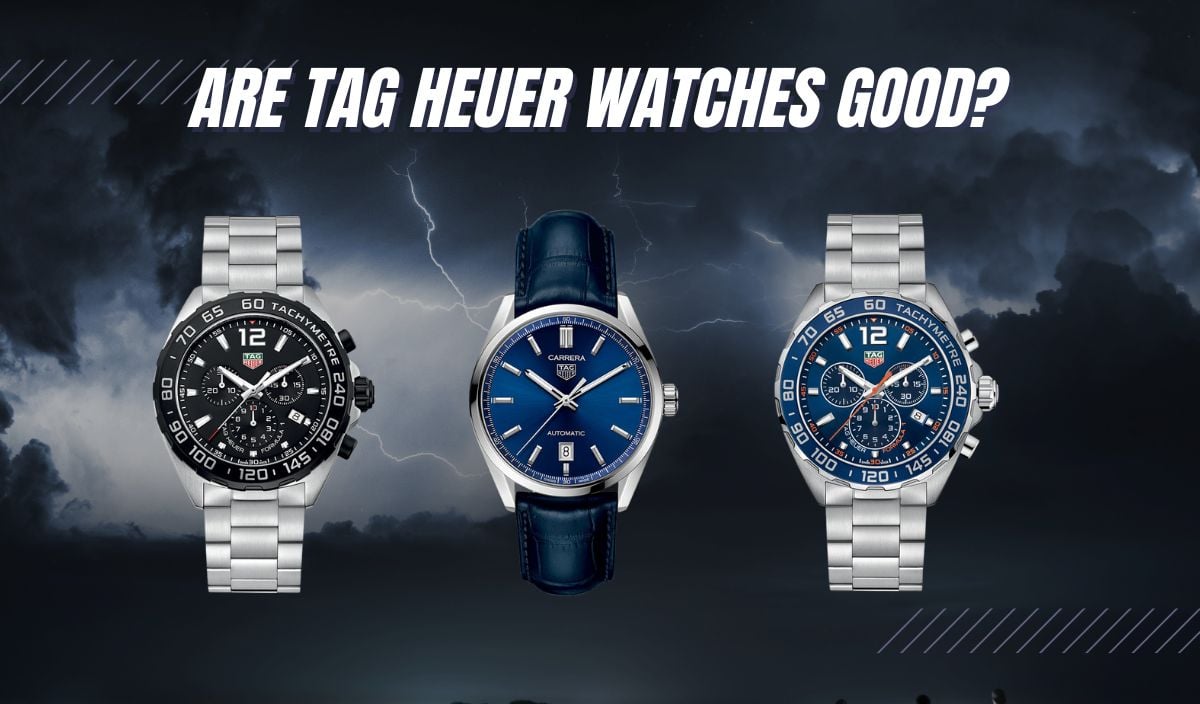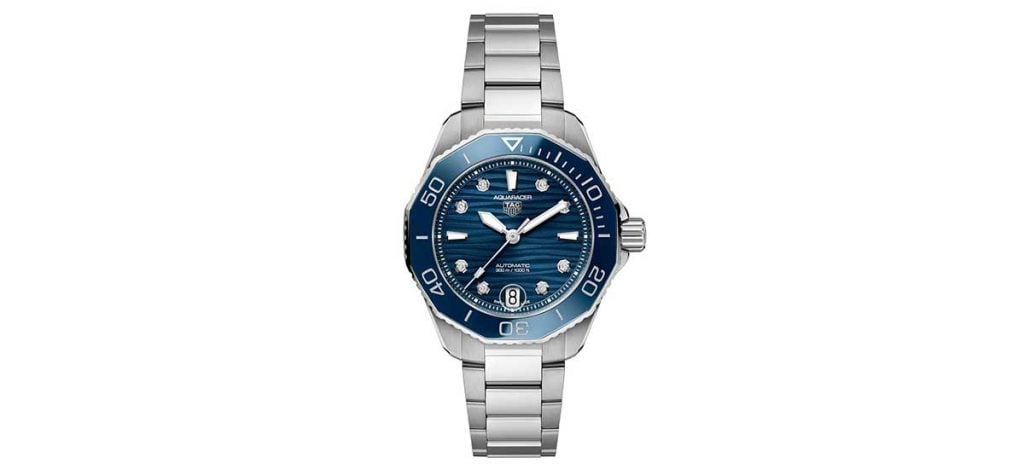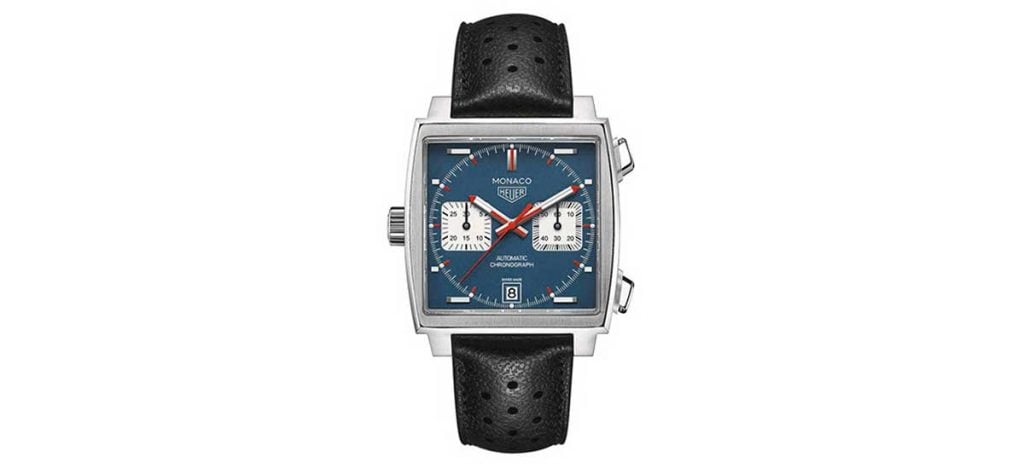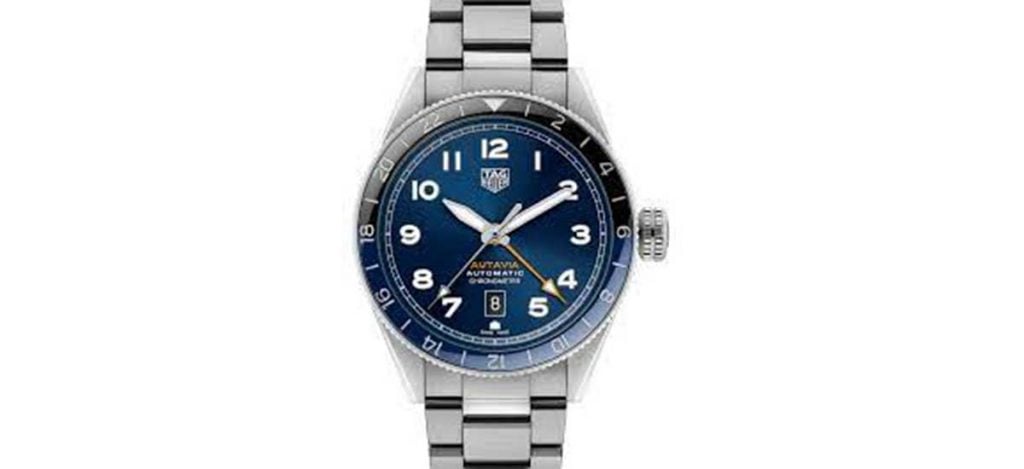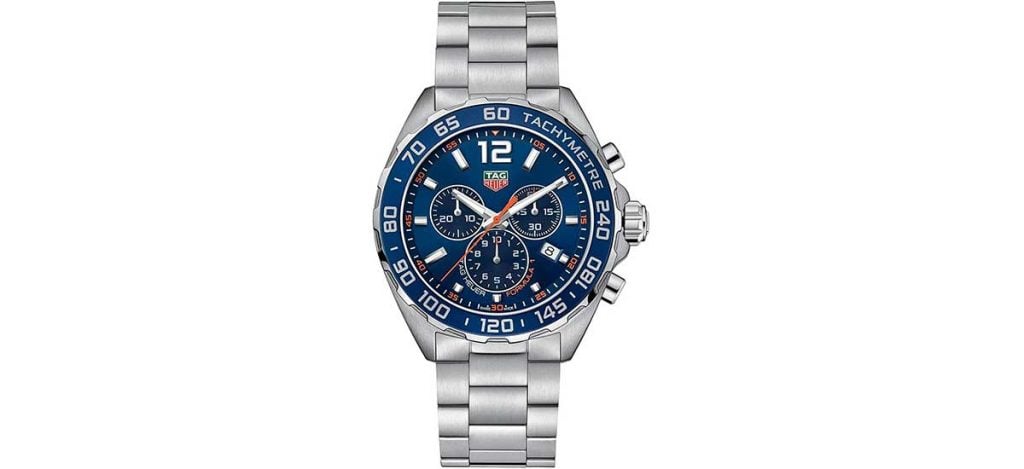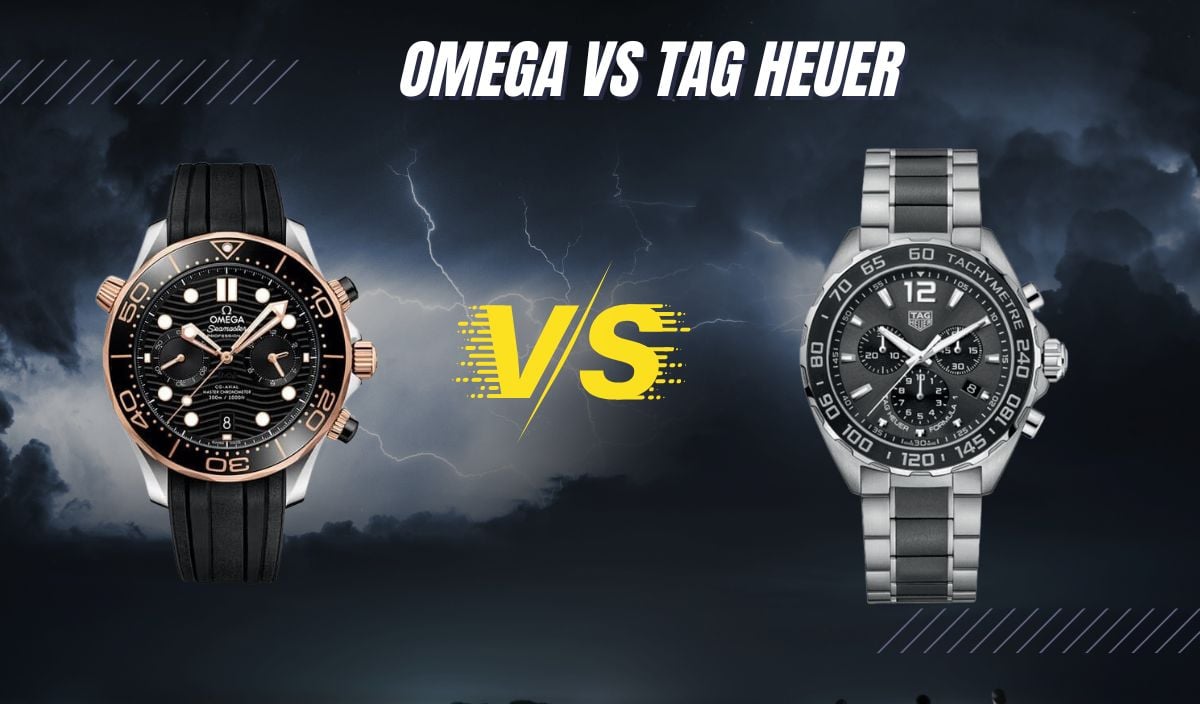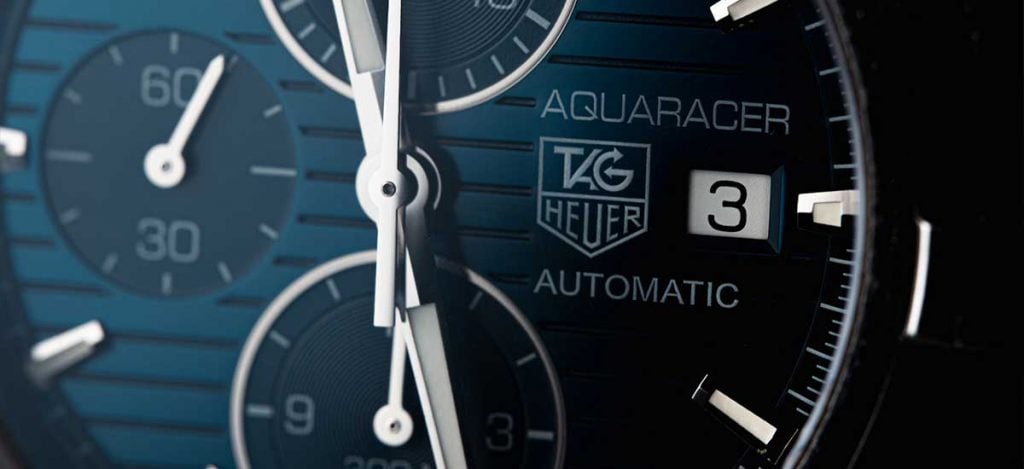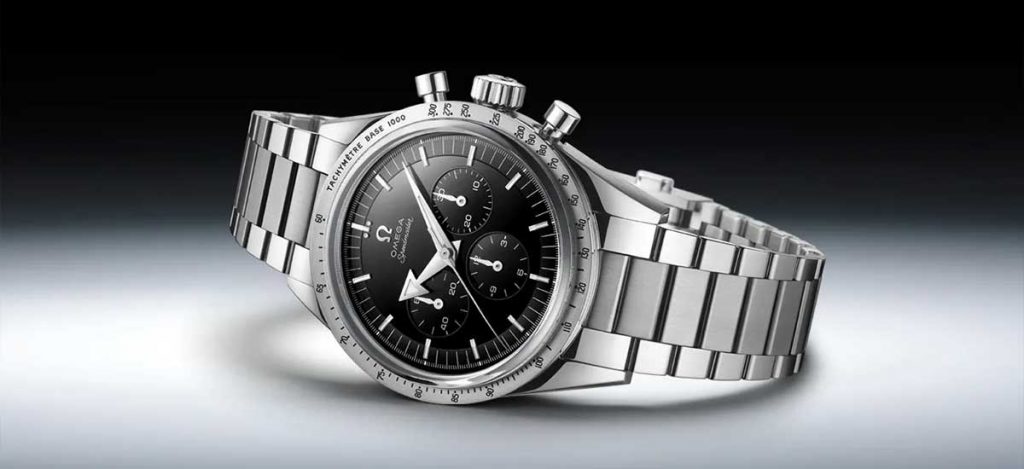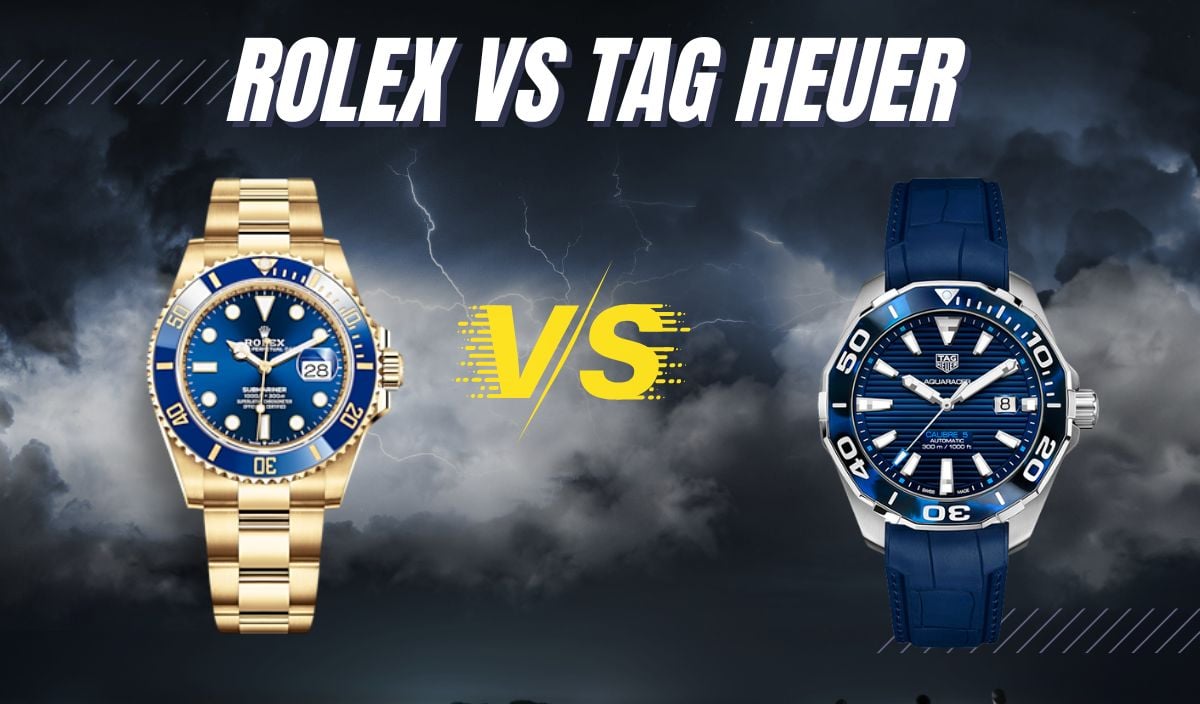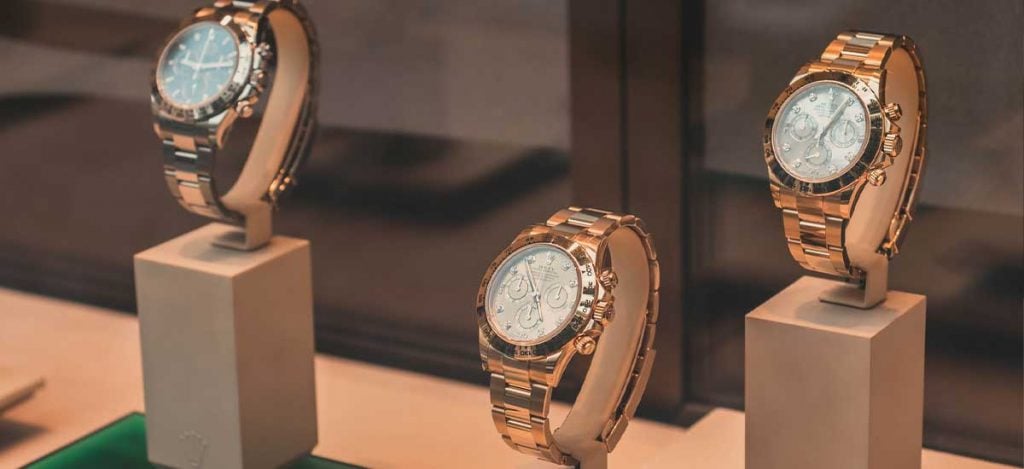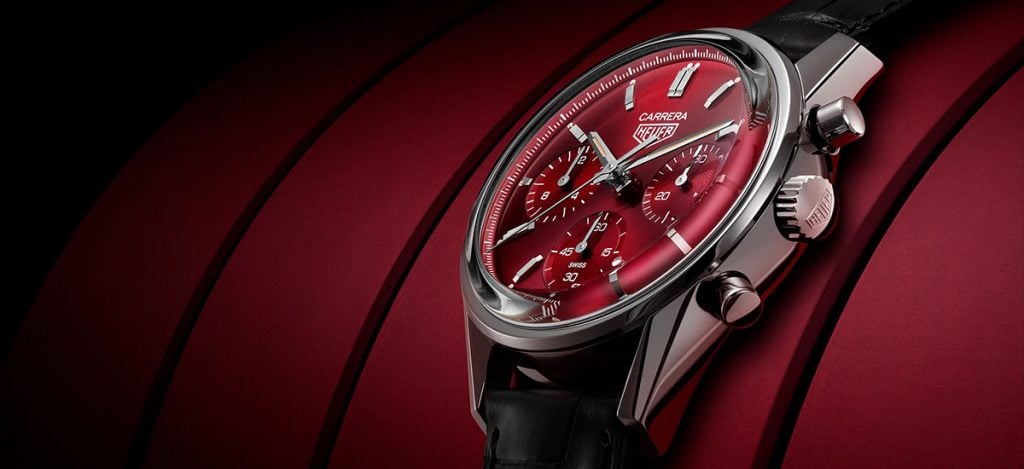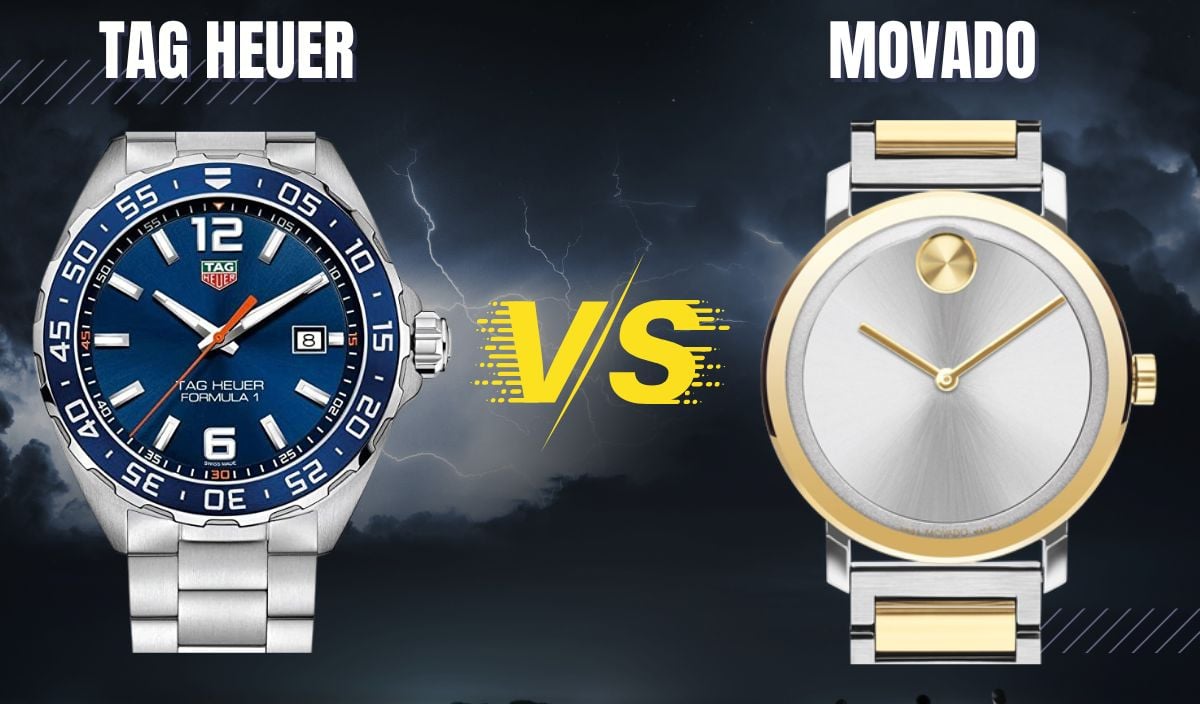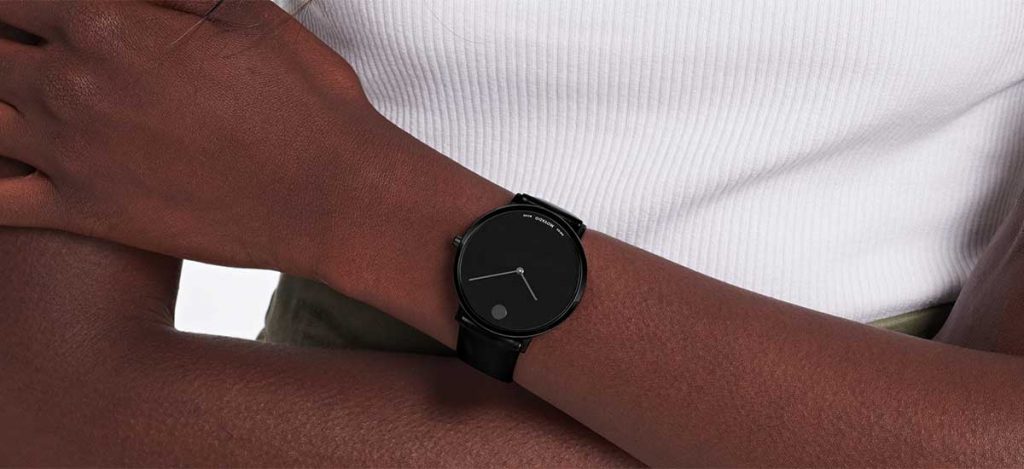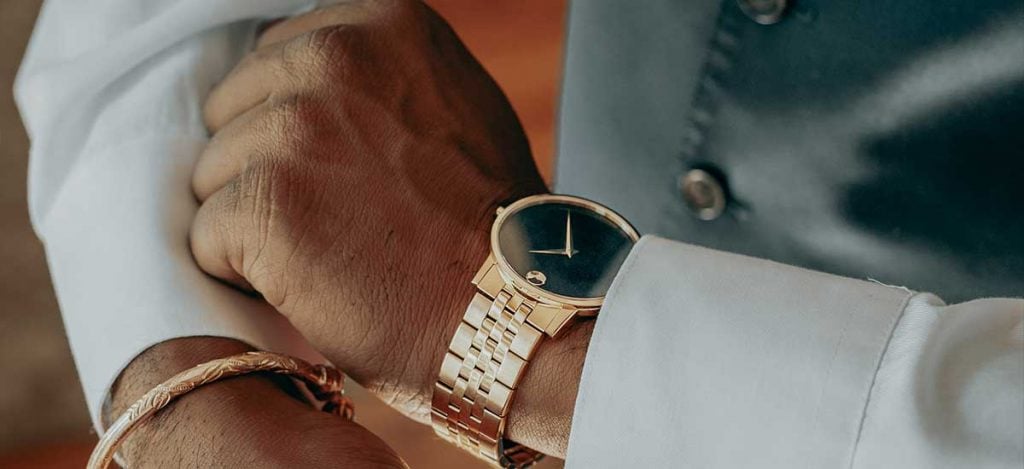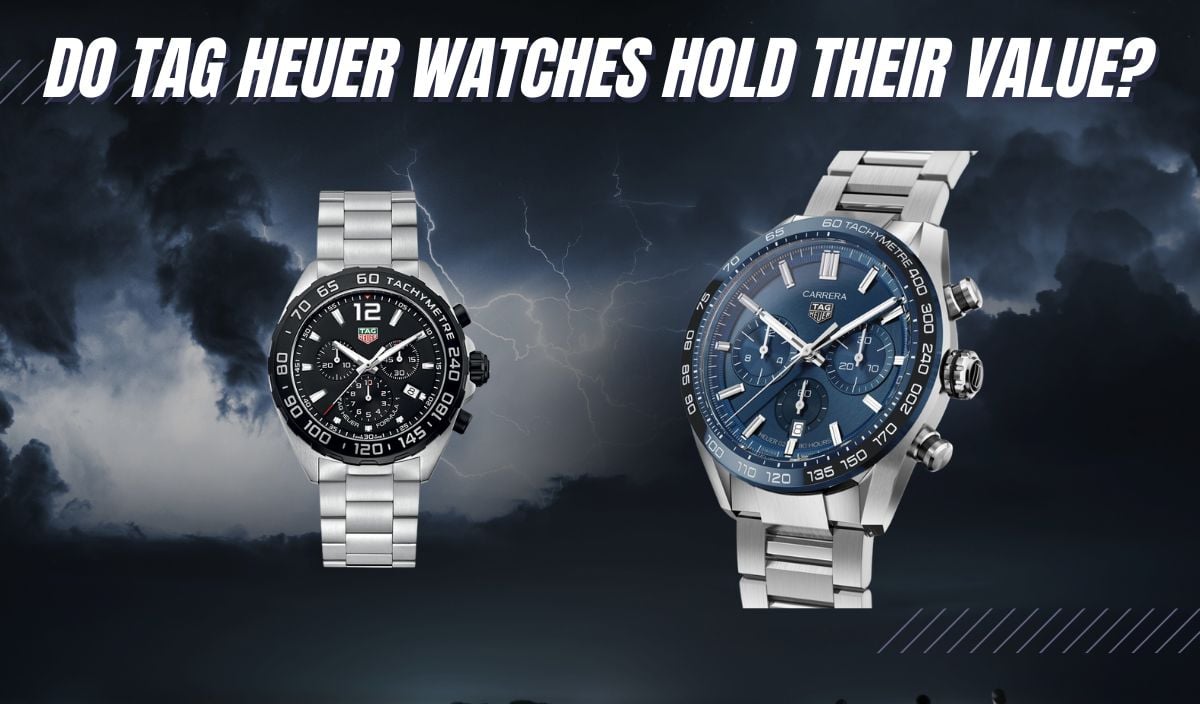
TAG Heuer, the Swiss watchmaker renowned for entry-level excellence and a certain square racer, has etched its name in the annals of horology. Crafting timepieces that straddle the realms of tradition and innovation, TAG Heuer combines heritage with contemporary aesthetics, creating affordable luxury timepieces and wrist-bound marvels coveted by connoisseurs.
But, beyond their exquisite craftsmanship and market appeal, I’ll be delving into the realm of investment here, where the long-term value of these watches reveals itself.
Drawing from a tapestry of industry knowledge and scrutiny of market trends, I’ll examine the characteristics that underpin TAG Heuer’s allure as an investment. From their long-standing reputation, impeccable build quality, and celebrated partnerships with motorsports and beyond, I’ll be exploring how the various factors of TAG Heuer timepieces intertwine to shape their value.
About TAG Heuer Watches
With a heritage steeped in horological superiority, this Swiss brand has been crafting exceptional timepieces since its inception in 1860. TAG Heuer’s story begins with Edouard Heuer, a visionary watchmaker who had an uncanny ability to push the boundaries of chronometric innovation in his time. Heuer’s relentless pursuit of accuracy led to groundbreaking developments, including the invention of the oscillating pinion in 1887, a revolutionary mechanism still used in mechanical chronographs today.
I’d be remiss if I didn’t mention some of TAG’s most iconic and renowned watches. The Monaco, introduced in 1969, became an instant classic with its bold square case and avant-garde design. If you like it, you love it, and if you don’t, you can’t stand it. Such is the power of the Monaco.
Thanks to its association with Steve McQueen through his iconic role in the film “Le Mans,” the Monaco has become a symbol of racing heritage and timeless style. The Carrera is another notable timepiece that has captured the imagination of watch enthusiasts worldwide. Launched in 1963, the Carrera embodied Heuer’s passion for motorsports.
Its sleek design, legible dial, and robust chronograph functionality made it a favorite among racing aficionados and watch connoisseurs alike. Given that it’s generally not a bank-busting watch (although it can be, depending on certain variables), the Carrera is still one of TAG’s most successful releases to date.
What might be clear at this point is that TAG Heuer’s enduring partnerships with motorsports have played a pivotal role in shaping its identity. From the Monaco’s association with the prestigious Monaco Grand Prix to the Carrera’s deep ties with the exhilarating world of Formula 1, TAG Heuer’s watches embody the spirit of speed, precision, and high-performance engineering.
In an industry where tradition meets innovation, TAG Heuer does a good job of combining the best of both worlds. Their ability to honor their horological legacy while pushing the boundaries of technology is a testament to their exceptional craftsmanship and forward-thinking mindset.
Whether you’re a racing enthusiast, a connoisseur of fine timepieces, or simply someone who appreciates the artistry that goes into watchmaking, TAG Heuer offers an unrivaled experience, particularly in terms of value for money. Let’s look at whether that value holds over time, though…
What Makes Luxury Watches Hold Their Value?
Like most watch nerds, I’m interested in unraveling the intricacies of timepiece investments, so I’ve taken it upon myself to dissect TAG’s value over time and shed light on the factors that contribute to value retention in their creations. This can be spread over a few key areas:
Brand Recognition: The Pillar of Prestige
When it comes to luxury watches, brand recognition reigns supreme. Renowned watchhouses with a storied history and a legacy of excellence often command higher prices and retain their value over time. Brands like Rolex, Patek Philippe, and Audemars Piguet have established themselves as stalwarts of luxury horology, and their timepieces consistently exhibit strong resale value, partly as a result of this.
The prestige associated with these brands stems from a combination of factors, including a commitment to impeccable craftsmanship, rigorous quality control, and a rich heritage that resonates with collectors and enthusiasts. TAG Heuer has been around for a long time, and few people are able to say they’ve never heard of the brand, in all honesty.
This is where it gets curious, though – despite TAG’s ubiquity as a brand name in high-end watchmaking, their reputation doesn’t inspire as much consumer confidence as most of their Swiss peers. Perhaps this is because TAG Heuer is generally considered less luxurious than the aforementioned brands, if only subconsciously, despite their horological breakthroughs and pioneering designs.
The price point has something to do with that – most TAG watches cost far less than even mid-range Rolexes, excluding them from the perceived upper echelons of watchmaking by dint of the fact that they’re cheaper.
Iconic Design: Transcending Trends
Beyond brand recognition, striking design plays a pivotal role in maintaining the value of luxury watches. Timepieces that boast enduring aesthetics, free from fleeting trends, tend to hold their value more effectively. These designs encapsulate a harmonious blend of form and function, standing the test of time.
Consider the elegance of the Rolex Submariner, with its iconic Oyster case and robust construction. Or the enduring appeal of the Patek Philippe Nautilus, characterized by its distinctive porthole-inspired design. These watches possess a visual language that transcends passing fads, ensuring their desirability remains intact, generation after generation.
TAG Heuer’s Monaco is a great example of this, as are a few of the brand’s vintage offerings (which we’ll get to later). The Monaco virtually cordoned off the square watch market upon release, and to this day, there’s not a square watch article you’ll find worth its salt that doesn’t mention at least one iteration of the quadrilateral ticker. Safe to say, it’s a high-selling piece for TAG, and it certainly has better value retention than many of their other models.
Rarity: Owning The Unattainable
The principle of supply and demand holds true in the world of luxury watches, where scarcity often begets value. Limited editions, discontinued models, or watches with unique complications inherently possess an allure that appeals to collectors and investors. We want what we can’t have, and once we have it, everyone else wants it more.
Limited production runs, such as the Audemars Piguet Royal Oak Offshore LeBron James, or vintage timepieces like the Omega Speedmaster Moonwatch, are highly sought after due to their exclusivity and rarity. The finite nature of these watches creates a sense of urgency among enthusiasts, driving prices upward and ensuring their value remains resilient.
Additionally, the presence of rare complications, such as tourbillons or minute repeaters, adds to the desirability and value retention of luxury watches. These intricate mechanisms require exceptional skill and expertise to manufacture, making them highly coveted among connoisseurs who appreciate the mastery behind their creations.
Do TAG Heuer Watches Hold Their Value?
When it comes to brand recognition, TAG Heuer stands tall, having carved a prominent niche in the industry since its founding in 1860. While it’s true that most TAG Heuer watches don’t hold their value as well as some of their luxury counterparts, the brand’s iconic models have proven to be exceptions to the rule.
Take, for instance, the legendary Monaco. This bold and distinctive timepiece exhibits stronger value retention compared to other TAG Heuer models, new or old. Look a bit closer, and you’ll notice that special iterations of the Monaco, such as the 18k gold reference CW5140, retain their value far better than others and, indeed, are bonafide horological gems among collectors.
With that being said, true collectors are movement geeks, and the simple fact that TAG Heuer outsources its movements is one that definitely detracts from the brand’s overall reputation and, consequently, from the long-term value of their watches.
In terms of watch design, TAG Heuer has established a reputation for creating timepieces that blend classic elegance with contemporary flair. Their commitment to striking aesthetics contributes to the allure of their watches but is that enough for the aftermarket in a world where good-looking watches are more accessible than ever?
While not all models share the same value retention, those with enduring classic designs, like the Carrera 1153B (known as the Jagger – you guess why) and the Autavia, have shown a better track record in retaining their value over time.
TAG Heuer’s limited editions and discontinued models tend to generate greater demand among collectors, bolstering their value. For example, the TAG Heuer Monaco Gulf Special Edition has become a sought-after timepiece due to its scarcity and unparalleled aesthetic elements. Likewise, the Autavia CBE2114 collaboration with Calibre 11, being a model that evokes musings of the Daytona, still fetches a pretty penny.
It is worth noting that while some TAG Heuer watches may experience depreciation in value, others exhibit a stronger hold. Vintage Heuer models, particularly those from the 1960s and 1970s, have benefitted from an upward trajectory in value appreciation due to their historical significance and collector appeal.
Important to note, however, is the fact that many of the rarest watches under the TAG umbrella were made when the brand was just ‘Heuer’, before TAG’s 1985 takeover. While not all TAG Heuer watches hold their value, as well as some luxury counterparts, the brand’s iconic models and vintage pieces have demonstrated stronger value retention.
The Monaco, Carrera, and Autavia stand out as examples of watches that generally hold their value better within the TAG Heuer lineup. With this being said, I wouldn’t recommend many TAG Heuer watches to someone looking for a timepiece as an investment.
Do TAG Heuer Watches Appreciate In Value?
Given that TAG Heuer is, despite the hate, a distinguished Swiss watchmaker with a rich heritage, it’s understandable why the brand has captured the hearts of enthusiasts and casual wearers alike. While watches made by some luxury watch brands have gained a reputation for being expensive investments, the story for TAG Heuer watches is slightly different.
Unlike those of certain haute horologists, TAG Heuer’s watches generally do not experience substantial appreciation in value. They are often considered entry-level luxury watches designed to be accessible and enjoyed by a wider audience. TAG takes pride in this, and they know what they’re doing. Remember – to the company, the aftermarket means little.
They make their bread on the factory floor, so while their watches may not appreciate in value over time, this fact says little about the quality and aptitude of TAG Heuer’s tickers. One factor to consider when assessing the investment potential of TAG Heuer watches is the brand’s iconic models.
Previously mentioned models, be they vintage or off-the-rack, have achieved cult status among collectors, and their value has seen some appreciation over time. The enduring appeal of these models, along with their historical significance and unique designs, contributes to their desirability in the market.
Furthermore, limited editions and special collaborations can be worth exploring for potential investment opportunities. TAG Heuer has released limited-run watches tied to significant events or partnerships, and their scarcity can drive up demand and, subsequently, value.
However, it is essential to conduct thorough research and assess the market dynamics before considering such timepieces as investment assets. The Jo Siffert Carrera is a good example in this category, as are many of the Heuer chronographs from the ‘40s and ‘50s, particularly those made from precious metals.
When it comes to investing in watches, it’s crucial to approach the endeavor from a well-informed perspective. The luxury watch market is subject to various factors of change, including shifting trends, brand reputation, and consumer preferences.
While TAG Heuer watches may not offer the same level of appreciation as some high-end luxury brands, they can still provide their owners joy, style, and craftsmanship. Furthermore, some of TAG Heuer’s newer watches, many of which include high-tech materials and intricate movements, may project greater value appreciation in decades to come.
The current state of the TAG aftermarket doesn’t necessarily determine what it will look like in 10 years.
Ultimately, whether a TAG Heuer watch proves to be a good investment depends on one’s goals and expectations. If you’re seeking substantial appreciation in value right now, there are certainly other brands that present more favorable opportunities.
What About Vintage TAG Heuer Watches?
Vintage watches inhabit a world of their own. A place where style and technology transcend generations for the sake of timelessness. When it comes to vintage TAG Heuer watches, the story takes a captivating turn.
The vintage Carrera and Monaco models, born during the era when TAG Heuer was still Heuer, hold a special place in the hearts of watch connoisseurs. These iconic timepieces showcase the brand’s pioneering spirit, pushing boundaries with their forward-thinking design and engineering prowess.
The Carrera, with its clean lines and race-inspired aesthetic, became an instant classic. The Monaco competes only with Cartier’s Tank for the title of ‘Most Recognisable Square Watch Of All Time’.
These vintage Heuer watches not only embody an era of horological innovation but has also proven to be lucrative investments. As the market for vintage watches continues to grow, collectors seek out such coveted timepieces, driving up their value. Heuer’s Triple Date Chronograph and Carerra 2448S are great representations of how the brand’s vintage watches have held their luster and financial appeal over decades.
However, venturing into the world of vintage watches requires a discerning eye and a comprehensive understanding of the market. Factors such as condition, authenticity, and provenance play a crucial role in determining the value of a vintage TAG Heuer timepiece.
Thorough research, consultation with experts, and a keen sense of rarity can help identify the hidden gems among the vintage offerings. If you’re not willing to put in some work to ensure the veracity of your purchase, it’s highly likely that you’ll end up with a vintage TAG that’s worth less than what you paid, so be vigilant and above all, patient.
TAG Heuer – A Final Evaluation
In the realm of horological investments, the value retention of TAG Heuer watches may not rival some high-end luxury brands. However, certain models, such as the iconic Monaco, Carrera, and limited editions, have shown the potential for better value retention. While TAG Heuer watches offer accessible luxury and contemporary designs, it is important to approach them as an investment with realistic expectations.
Vintage TAG Heuer watches, especially those from the era when the brand was known as Heuer, have witnessed a surge in value appreciation, becoming hidden gems sought after by collectors. Ultimately, the value of a TAG Heuer watch extends beyond monetary gains, encompassing the craftsmanship, design, and personal enjoyment it brings to its owner.

